![]()
Kairouan Fourth holiest city in Islam.
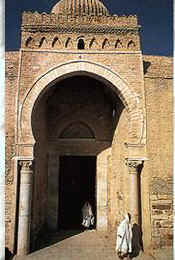 Kairouan is
situated half way between the coast and the mountains, in a half
steppe region with a warm and rather dry climate. It lies on the
passageway of many important desert convoys. The city was founded
Kairouan is
situated half way between the coast and the mountains, in a half
steppe region with a warm and rather dry climate. It lies on the
passageway of many important desert convoys. The city was founded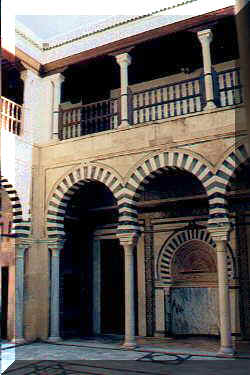 in 670
by Oqba ibn Nafi. The legend tells that a spring gushed out at
the feet of its founder who discovered on that same spot a gold
cup that had got lost a few years before in Mecca’s sacred
Zemzem spring. For a very long period, it was a shining capital
that especially prospered under Aghlabid
rule (9th century). The Aghlabids enriched the
town with magnificent palaces and important edifices. These same
rulers made the town famous for its olive plantations.
in 670
by Oqba ibn Nafi. The legend tells that a spring gushed out at
the feet of its founder who discovered on that same spot a gold
cup that had got lost a few years before in Mecca’s sacred
Zemzem spring. For a very long period, it was a shining capital
that especially prospered under Aghlabid
rule (9th century). The Aghlabids enriched the
town with magnificent palaces and important edifices. These same
rulers made the town famous for its olive plantations.
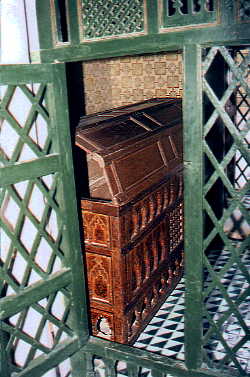 Under the reign
of the Fatimids, Kairouan shared its role of capital with Mahdia,
until both cities were abandoned in favour of Cairo. In 1057, the
Hilalian Bedouins invaded the town. Under their rule Kairouan
lost most of its political and strategic importance, but
preserved its prestigious status as holy city in the Maghreb. The
city encountered later on happier and less fortunate periods
under the Hafsid
(14th century) and Husseinite
reigns. It would, however, lose its splendor forever.
Under the reign
of the Fatimids, Kairouan shared its role of capital with Mahdia,
until both cities were abandoned in favour of Cairo. In 1057, the
Hilalian Bedouins invaded the town. Under their rule Kairouan
lost most of its political and strategic importance, but
preserved its prestigious status as holy city in the Maghreb. The
city encountered later on happier and less fortunate periods
under the Hafsid
(14th century) and Husseinite
reigns. It would, however, lose its splendor forever.
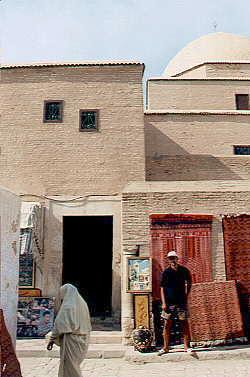 Kairouan occupies a predominant place in Arab-Maghreban
civilisation thanks to its important religious and spiritual
character. Because of its special emanation, numerous Koran
schools, as well as a university were installed in the city.
Kairouan occupies a predominant place in Arab-Maghreban
civilisation thanks to its important religious and spiritual
character. Because of its special emanation, numerous Koran
schools, as well as a university were installed in the city.
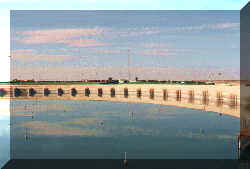 Nowadays, Kairouan concentrates on trade and
tourism. It is renowned for its magnificent hand made tapestries
throughout Tunisia. Its salesmen are said to be the most cunning
in the country.
Nowadays, Kairouan concentrates on trade and
tourism. It is renowned for its magnificent hand made tapestries
throughout Tunisia. Its salesmen are said to be the most cunning
in the country.
Tourists will discover in this oriental town : mosques,
brick-built ramparts, animated souks, alleys with immaculate
walls of a light bluish color and mausoleums. Visitors will also
be able to experience that, in spite of everything, the city has
at least preserved some of its powerful and charming
characteristics of yesteryear.